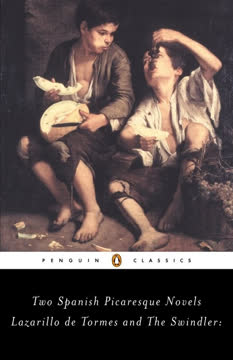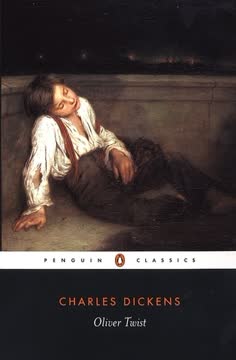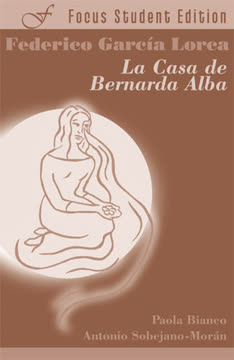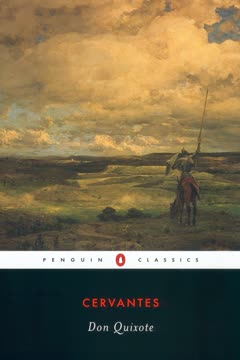Plot Summary
Birth by the River
Lázaro de Tormes is born in a river, the son of a miller who is caught stealing and a mother who struggles to make ends meet. After his father's death, his mother takes up with a black man, Zaide, who provides for them until he is caught stealing. Lázaro is then apprenticed to a blind man, marking the start of his journey through a series of exploitative masters.
Masters and Misery
Lázaro serves a blind man who teaches him to be cunning and resourceful. Despite the blind man's cruelty, Lázaro learns to survive by outsmarting him. He moves on to serve a priest who is even more miserly, forcing Lázaro to steal to avoid starvation. Each master teaches Lázaro about the harshness of life and the necessity of deceit.
The Noble Illusion
Lázaro becomes the servant of a squire who is more concerned with appearances than reality. The squire is impoverished but maintains a facade of nobility, teaching Lázaro about the superficiality of social status. Lázaro learns to navigate the world of appearances, realizing that honor and nobility are often illusions.
The Deceptive Priest
Lázaro's next master is a pardoner who sells fake indulgences, exploiting people's faith for profit. This experience exposes Lázaro to the corruption within the Church and the manipulation of religious beliefs for personal gain. Lázaro becomes disillusioned with the moral integrity of those in power.
The Swindler's Tricks
In "The Swindler," Pablos, a young man of low birth, seeks to rise in society through deceit and cunning. He learns the tricks of the trade from various unsavory characters, including a barber and a witch. Pablos' journey is marked by a series of misadventures that highlight the corrupt and hypocritical nature of society.
The Actor's Stage
Pablos joins a troupe of actors, finding a temporary home in the world of theater. He discovers the art of deception and the power of performance, both on and off the stage. This chapter explores the blurred lines between reality and illusion, as Pablos navigates the theatrical world.
The Final Deception
Pablos' ambition leads him to Seville, where he becomes entangled in a life of crime. Despite his cunning, he is eventually caught and imprisoned. His story serves as a cautionary tale about the dangers of deceit and the futility of trying to escape one's origins through dishonesty.
A New Beginning
Lázaro finds a stable position as a town crier, marrying a woman with a questionable past. He accepts his place in society, realizing that true contentment comes from embracing one's reality rather than chasing illusions. Lázaro's journey ends with a sense of resignation and acceptance of his lot in life.
Characters
Lázaro de Tormes
Lázaro is a young boy who learns to navigate a world filled with deceit and exploitation. His journey through various masters teaches him the importance of cunning and adaptability. Lázaro's character embodies resilience and the struggle for survival in a corrupt society.
The Blind Man
Lázaro's first master, the blind man, is a beggar who teaches Lázaro to be resourceful and deceitful. His cruelty and cunning set the tone for Lázaro's future interactions, highlighting the harshness of the world Lázaro must navigate.
The Priest
The priest is a miserly and hypocritical figure who represents the corruption within the Church. His treatment of Lázaro exposes the gap between religious teachings and the actions of those who preach them, contributing to Lázaro's disillusionment.
The Squire
The squire is a destitute nobleman who maintains a facade of wealth and status. His character illustrates the superficial nature of social class and the lengths to which people will go to maintain appearances.
Pablos
Pablos is the protagonist of "The Swindler," a young man determined to rise above his lowly origins through deceit and manipulation. His journey is marked by a series of misadventures that reveal the corrupt nature of society and the futility of his ambitions.
The Pardoner
The pardoner is a conman who sells fake indulgences, exploiting people's religious beliefs for profit. His character highlights the theme of religious hypocrisy and the manipulation of faith for personal gain.
The Actress
The actress is a member of the theater troupe Pablos joins. She represents the allure of the theatrical world and the blurred lines between reality and performance. Her relationship with Pablos underscores the theme of deception.
The Lawyer
The lawyer is a figure who represents the legal system's potential for corruption. His interactions with Lázaro and Pablos reveal the complexities of justice and the ease with which it can be manipulated.
Grajales
Grajales is a woman who becomes involved with Pablos during his time in Seville. She represents the temptations and moral compromises that Pablos faces in his pursuit of wealth and status.
Plot Devices
Picaresque Structure
Both novels employ a picaresque structure, following the protagonists as they navigate a series of episodic adventures. This structure allows for a satirical exploration of society's flaws and the characters' development through their interactions with various masters and environments.
Social Satire
The novels use humor and irony to critique the social, religious, and moral norms of the time. Through the protagonists' misadventures, the authors expose the hypocrisy and corruption prevalent in society, encouraging readers to question accepted values.
Deception and Disguise
Deception and disguise are central themes, with characters frequently adopting false identities to navigate their worlds. This motif highlights the fluidity of identity and the ease with which appearances can be manipulated to achieve personal goals.
Analysis
"Lazarillo de Tormes" and "The Swindler" offer a critical examination of 16th and 17th-century Spanish society, focusing on themes of deception, hypocrisy, and the struggle for survival. Through the picaresque journeys of Lázaro and Pablos, the novels reveal the moral and social decay of the time, challenging readers to reflect on the nature of honor, class, and integrity. The works remain relevant today, offering insights into the human condition and the enduring complexities of societal structures.
Last updated:
FAQ
Synopsis & Basic Details
What is Lazarillo de Tormes and The Swindler: Two Spanish Picaresque Novels about?
- Survival in Corrupt Spain: Lazarillo de Tormes chronicles the episodic life of Lázaro, a boy of humble origins, as he navigates 16th-century Spain, serving a series of masters who exploit and abuse him. His journey from innocence to cynical self-preservation exposes the hypocrisy and moral decay of society, particularly within the clergy and nobility.
- Ambitious Ascent and Fall: The Swindler (El Buscón) follows Pablos, a young man determined to escape his ignoble birth through cunning and deceit. His adventures, marked by elaborate cons and social climbing, ultimately lead to a life of crime and a realization that one cannot truly escape one's origins or the consequences of one's actions.
- Foundational Picaresque Narratives: Both novels are seminal examples of the picaresque genre, presenting first-person autobiographical accounts of anti-heroes (pícaros) who survive by their wits in a harsh, class-conscious world, offering a satirical and often bleak commentary on human nature and societal structures.
Why should I read Lazarillo de Tormes and The Swindler: Two Spanish Picaresque Novels?
- Insight into Golden Age Spain: These novels offer a vivid, unvarnished look at 16th and 17th-century Spanish society, its social hierarchies, religious practices, and economic struggles, providing a unique historical and cultural context often missed in other literary forms.
- Masterful Social Satire: Readers will appreciate the sharp wit and biting social satire that expose the hypocrisy of the clergy, the vanity of the nobility, and the pervasive corruption, making these texts enduring examples of satirical literature.
- Exploration of Human Nature: Beyond the historical setting, the stories delve into universal themes of survival, moral compromise, ambition, and identity, prompting reflection on how individuals adapt (or fail to adapt) to challenging circumstances, making them highly relevant for
picaresque novel themesanalysis.
What is the background of Lazarillo de Tormes and The Swindler: Two Spanish Picaresque Novels?
- Post-Reconquista Spain: The novels are set against the backdrop of Spain's Golden Age, following the 1492 Reconquista and the expulsion/conversion of Jews and Muslims. This era was marked by a rigid social structure, the omnipresent Spanish Inquisition, and an obsession with
limpieza de sangre(cleanness of blood), which heavily influences the characters' struggles for honor and status. - Economic Decline and Social Upheaval: The 16th and 17th centuries saw Spain's imperial power wane, leading to economic decline, inflation, and widespread poverty. This societal distress, as noted by the Venetian ambassador Andrea Navagiero, fueled migration to cities and a contempt for manual labor, creating the "squalid world" that the pícaros inhabit and exploit.
- Erasmian and New Christian Influences: Lazarillo de Tormes, an anonymous work, is often attributed to Erasmian or New Christian circles, reflecting a critique of external religious conformity and clerical laxity. The Swindler, by contrast, displays hostility towards New Christians, reflecting the period's intense social prejudices and the author Quevedo's own views on class immutability.
What are the most memorable quotes in Lazarillo de Tormes and The Swindler: Two Spanish Picaresque Novels?
- "You'll have to learn that a blind man's boy has got to be sharper than a needle!" (Lazarillo, Chapter 1): This quote from the blind man, delivered after a brutal head-smash, is Lázaro's brutal awakening to the harsh realities of his world, marking his transition from naive child to cunning survivor and setting the stage for his
Lázaro's moral development. - "How many people must there be in the world who run away from others in fright because they can't see themselves?" (Lazarillo, Chapter 1): Lázaro's profound, early observation after his mulatto half-brother recoils from his black father, ironically foreshadows Lázaro's own later self-deception and the pervasive hypocrisy he will encounter and eventually embody.
- "I'm not saying this just for the sake of boasting, for everybody knows how unlike me that would be." (The Swindler, Book 1, Chapter 1): Pablos's opening statement immediately establishes his
unreliable narratorpersona and his deep-seated vanity, setting a darkly humorous tone for his self-aggrandizing and often contradictory autobiography.
What writing style, narrative choices, and literary techniques does Francisco de Quevedo use?
- Baroque
ConceptismoStyle: Quevedo's writing in The Swindler is characterized byconceptismo, a baroque style emphasizing wit, wordplay, elaborate metaphors, and antithesis. This creates a dense, intellectually challenging prose, as seen in his puns on words like "ante" (first course/suede cloth), which often makes translation difficult but enriches theQuevedo writing stylewith layers of meaning. - Grotesque Exaggeration and Satire: Quevedo employs grotesque exaggeration to depict a world of squalor, crime, and moral decay, particularly in his descriptions of Pablos's physical suffering and the depravity of his associates. This technique amplifies the
social commentary The Swindleroffers, making the societal flaws almost physically repulsive. - First-Person
Unreliable Narrator: Like Lazarillo, The Swindler uses a first-person narrative, but Pablos is even more self-serving and morally detached than Lázaro. His recounting of events is often biased, justifying his actions and blaming others, which forces the reader to constantly question his perspective and the "truth" of his experiences.
Hidden Details & Subtle Connections
What are some minor details that add significant meaning?
- The Stone Bull at Salamanca (Lazarillo): The bull on the bridge, where the blind man tricks Lázaro into hitting his head, is not just a physical landmark but a symbolic "altar" where Lázaro's innocence is sacrificed. It represents his brutal initiation into the world's harshness, a moment of "awakening" where he realizes he must rely on his own cunning to survive, a key
Lazarillo de Tormes symbolism. - Dr. Goat's Miraculous Cassock (The Swindler): The description of Dr. Goat's cassock, "nobody could tell its colour... it looked black from close up but bluish from a distance," subtly symbolizes the pervasive hypocrisy and moral ambiguity of the clergy. Its changing appearance reflects how outward religious piety often conceals inner corruption, a detail in
The Swindler explainedthat highlights the era's critique of the Church. - The Pardoner's "Latin" (Lazarillo): The pardoner's ability to speak "Latin" for two hours when addressing uneducated clergy, which is "not Latin but it did sound like it," is a subtle jab at the superficiality of religious education and the ease with which the unlearned could be manipulated. It underscores the theme of deception and the exploitation of ignorance within the Church.
What are some subtle foreshadowing and callbacks?
- Lázaro's Mother's Advice (Lazarillo): His mother's instruction to "mix with respectable people" (arrimarse a los buenos) in Chapter 1, initially meant for Lázaro's well-being, ironically foreshadows his ultimate "success" in Chapter 7 by aligning himself with the Archpriest's corrupt arrangement, highlighting the novel's cynical view of social advancement and
Lázaro's moral development. - The Blind Man's Horn Prophecy (Lazarillo): The blind man's cryptic remark about the inn's horn, "One day this thing that I've got in my hand will give you an ill-deserved day's meals," subtly foreshadows Lázaro's eventual marriage to the Archpriest's concubine. The horn, a symbol of cuckoldry, directly links to Lázaro's final, morally compromised position, a crucial
Lazarillo de Tormes symbolism. - Pablos's Father's "Liberal Profession" (The Swindler): Pablos's father's assertion that "being a thief isn't just a job, it's a liberal profession" in Book 1, Chapter 1, subtly foreshadows Pablos's entire trajectory. Despite his attempts at gentlemanly status, Pablos consistently returns to and refines his thieving skills, ultimately embracing a life of crime, fulfilling his father's cynical "legacy" and revealing
Pablos motivations.
What are some unexpected character connections?
- Lázaro and the Squire: Mirroring Destitution: While seemingly contrasting (Lázaro a servant, the squire a nobleman), they are unexpectedly connected by their shared, hidden destitution. Lázaro, the beggar, ends up feeding his master, the proud gentleman, revealing that beneath the veneer of honor, both are victims of a society that values appearance over substance. This connection deepens the
themes in Lazarillo de Tormesregarding social class. - Pablos and the Fencing Master: Shared Delusion: The fencing master, obsessed with mathematical precision in swordplay, and Pablos, the aspiring gentleman, are linked by their shared delusion of self-improvement through superficial means. The master's impractical theories mirror Pablos's belief that he can "fence" his way into nobility, highlighting the futility of their efforts in a corrupt world.
- The Pardoner and the Constable: Collusion in Deceit: Their staged quarrel and subsequent "miracle" in Lazarillo's Chapter 5 reveal an unexpected, calculated partnership in fraud. This isn't just two individuals, but a subtle commentary on how institutions (Church and law enforcement) can collude to exploit the populace, exposing the systemic
hypocrisy in Lazarillo de Tormes.
Who are the most significant supporting characters?
- The Blind Man (Lazarillo): More than just a cruel master, the blind man is Lázaro's primary educator in the art of survival and deceit. His brutal lessons, like the head-smash at the bull, are formative, shaping Lázaro's cunning and cynical worldview, making him central to
Lázaro's moral development. - Dr. Goat (The Swindler): This avaricious tutor, a personification of "Hunger incarnate," profoundly impacts Pablos's early life. His extreme stinginess and the resulting starvation force Pablos to develop his resourcefulness and solidify his determination to escape poverty, directly influencing
Pablos motivationsfor social climbing. - The Archpriest of St. Salvador's (Lazarillo): Though appearing late, the Archpriest is pivotal as Lázaro's final master and the catalyst for his "peak of good fortune." His arrangement for Lázaro to marry his concubine, and Lázaro's acceptance of this cuckoldry, encapsulates the novel's ultimate critique of honor and the Church's moral decay, providing a key to
Lazarillo de Tormes ending explained.
Psychological, Emotional, & Relational Analysis
What are some unspoken motivations of the characters?
- Lázaro's Desire for Acceptance: Beyond mere survival, Lázaro implicitly craves social acceptance and a sense of belonging, which drives his relentless pursuit of new masters and his eventual, albeit compromised, "settling down." His final contentment, despite the cuckoldry, stems from achieving a semblance of respectability and stability, revealing a deeper
Lázaro's moral developmentthan simple hunger. - Pablos's Deep-Seated Shame: Pablos's relentless ambition to become a gentleman is fueled by a profound, unspoken shame regarding his parents' dishonorable professions (hangman father, witch mother with Jewish ancestry). His elaborate deceptions are not just for gain, but a desperate attempt to erase his origins and gain the honor he believes is denied to him, a core aspect of
Pablos motivations. - The Squire's Fear of Exposure: The impoverished squire's extreme vanity and insistence on appearances are driven by an unspoken terror of his true destitution being revealed. His elaborate rituals and refusal to work are a psychological defense mechanism to maintain his fragile self-image and social standing, even at the cost of starvation.
What psychological complexities do the characters exhibit?
- Lázaro's Self-Deception and Rationalization: Lázaro exhibits complex self-deception, particularly in his final state. He rationalizes his wife's adultery and his own cuckoldry as the "peak of good fortune," convincing himself that peace and material comfort outweigh honor. This psychological coping mechanism allows him to endure a morally ambiguous existence, a key element in
Lazarillo de Tormes analysis. - Pablos's Narcissistic Grandiosity: Pablos displays narcissistic tendencies, believing himself inherently superior despite his origins and actions. His elaborate cons and disguises are not just practical but feed his grandiose self-image, even when they lead to his downfall. He rarely shows genuine empathy, viewing others primarily as tools or obstacles, which is central to
Pablos character analysis. - The Blind Man's Sadistic Pedagogy: The blind man's cruelty towards Lázaro is not merely for survival but seems to contain a sadistic pleasure in teaching Lázaro the harshness of the world. His "lessons" are designed to break Lázaro's spirit while simultaneously sharpening his wits, creating a complex dynamic of victim and mentor that shapes Lázaro's early psychology.
What are the major emotional turning points?
- Lázaro's "Awakening" at the Stone Bull: The blind man's brutal trick at the stone bull is Lázaro's first major emotional turning point. The physical blow ("my head crashed against that blasted bull") is accompanied by a profound mental shift: "At that moment I felt as if I had woken up and my eyes were opened." This marks the end of his naive trust and the beginning of his cunning, a pivotal moment in
Lázaro's moral development. - Pablos's Realization of His Parents' Shame: The letters detailing his father's execution and his mother's arrest as a witch are a devastating emotional turning point for Pablos. This public humiliation solidifies his resolve to completely sever ties with his past and pursue a new, honorable identity, intensifying his
Pablos motivationsfor social climbing. - Lázaro's Acceptance of Cuckoldry: The Archpriest's "promise" and Lázaro's subsequent oath to never question his wife's fidelity represent a final, cynical emotional turning point. He consciously chooses material security and social standing over personal honor, signifying his complete immersion into the corrupt values of his society, a crucial aspect of
Lazarillo de Tormes ending explained.
How do relationship dynamics evolve?
- Master-Servant to Adversarial (Lázaro & Blind Man): The relationship begins as a traditional master-servant dynamic, but quickly devolves into a constant, escalating battle of wits and cruelty. Lázaro's initial subservience transforms into active rebellion and cunning retaliation, culminating in his violent escape, demonstrating a power shift in
Lazarillo de Tormes analysis. - Pablos's Shifting Alliances: Pablos's relationships are consistently transactional and opportunistic. He forms temporary alliances (with Don Diego, the housekeeper, the Madrid swindlers) based on mutual benefit, but these are easily discarded or betrayed when they no longer serve his ambition, highlighting his moral flexibility and the transient nature of loyalty in his world.
- Lázaro's Final Compromise (Lázaro & Archpriest/Wife): His final relationship with the Archpriest and his wife is a complex web of dependency and unspoken agreement. Lázaro gains stability and status, but at the cost of his honor, becoming complicit in the Archpriest's illicit affair. This dynamic showcases the corrupting influence of power and the compromises individuals make for security, a central
themes in Lazarillo de Tormes.
Interpretation & Debate
Which parts of the story remain ambiguous or open-ended?
- The Identity of "Your Honour" (Lazarillo): The anonymous author's dedication to an unnamed "Your Honour" in the prologue remains a significant ambiguity. This device could be a literary convention, a veiled address to a specific patron, or even a subtle critique of the reader, inviting them to judge Lázaro's story and the society it depicts, adding depth to
authorial intent Lazarillo de Tormes. - Lázaro's True Contentment (Lazarillo): Whether Lázaro is genuinely content at the end or merely resigned to his fate is open to debate. His boastful tone in the prologue ("at the height of my good fortune") can be read as sincere self-satisfaction or as a deeply ironic statement from an
unreliable narratorwho has sacrificed his integrity for comfort. - Pablos's Fate in the Indies (The Swindler): The novel concludes with Pablos stating that things "went worse" in the New World, promising a "Second Part" that never materialized. This leaves his ultimate fate ambiguous, prompting readers to ponder whether his inherent character flaws would always lead to misfortune, or if a true change of environment could have offered redemption, a key
The Swindler explainedpoint.
What are some debatable, controversial scenes or moments in Lazarillo de Tormes and The Swindler: Two Spanish Picaresque Novels?
- Lázaro's Revenge on the Blind Man (Lazarillo): Lázaro's final, brutal act of leading the blind man to smash his head against a pillar is highly controversial. While some see it as justified retribution for years of abuse, others view it as Lázaro's complete moral corruption, demonstrating how he has internalized his master's cruelty. This scene sparks debate on
Lázaro's moral developmentand the nature of justice. - The Pardoner's "Miracle" (Lazarillo): The staged "miracle" where the constable feigns demonic possession to boost indulgence sales is a controversial critique of religious manipulation. It directly challenges the sanctity of the Church and the credulity of the faithful, raising questions about
hypocrisy in Lazarillo de Tormesand the exploitation of faith. - Pablos's
Limpieza de SangreObsession (The Swindler): Quevedo's portrayal of Pablos's mother having "Moorish or Jewish blood" and his patron Don Diego's family having the surname "Coronel" (linked to converted Jews) is highly controversial. This reflects the period's intense racial and religious prejudices, sparking debate on Quevedo's own anti-Semitic views and the role ofsocial commentary The Swindlerin perpetuating or critiquing such biases.
Lazarillo de Tormes and The Swindler: Two Spanish Picaresque Novels Ending Explained: How It Ends & What It Means
- Lázaro's Cynical "Peak of Good Fortune": Lázaro ends his narrative as the town crier of Toledo, married to the Archpriest's maid, who is also the Archpriest's mistress. He explicitly states he is "at the height of my good fortune" and will tolerate no gossip, effectively embracing cuckoldry for social and economic stability. This ending signifies Lázaro's complete moral compromise and his assimilation into a corrupt society, where appearances and material gain supersede honor and integrity, a profound
Lazarillo de Tormes ending explained. - The Futility of Escaping Origins for Pablos: The Swindler concludes with Pablos, after a life of elaborate cons and crimes, deciding to flee to the Indies with a prostitute, Grajales, hoping for a new beginning. However, he explicitly states, "But they went worse, as they always will for anybody who thinks he only has to move his dwelling without changing his life or ways." This ending powerfully conveys the novel's central theme: one cannot escape one's inherent character or the consequences of one's past through mere geographical relocation, reinforcing the
Pablos character analysisas a cautionary tale. - A Bleak Vision of Spanish Society: Both endings, though distinct, offer a bleak and cynical commentary on 16th and 17th-century Spanish society. Lázaro's "success" is built on moral degradation, while Pablos's attempts at social mobility are repeatedly thwarted by his origins and his own criminal nature. The novels suggest that true honor is unattainable for the low-born, and that society itself is fundamentally corrupt, forcing individuals into moral compromises for survival, a core
picaresque novel themesinsight.
Review Summary
Lazarillo de Tormes and The Swindler are classic Spanish picaresque novels, praised for their humor, wit, and social commentary. Readers appreciate the realistic portrayal of 16th-17th century Spain, the clever protagonists, and the satirical elements targeting religious hypocrisy and social injustice. While some find the episodic nature and lack of character growth tedious, many value these works for their historical significance and influence on later literature. The bawdy humor and scatological references may not appeal to all, but the novels remain important examples of early Spanish prose.
Similar Books
Download PDF
Download EPUB
.epub digital book format is ideal for reading ebooks on phones, tablets, and e-readers.










